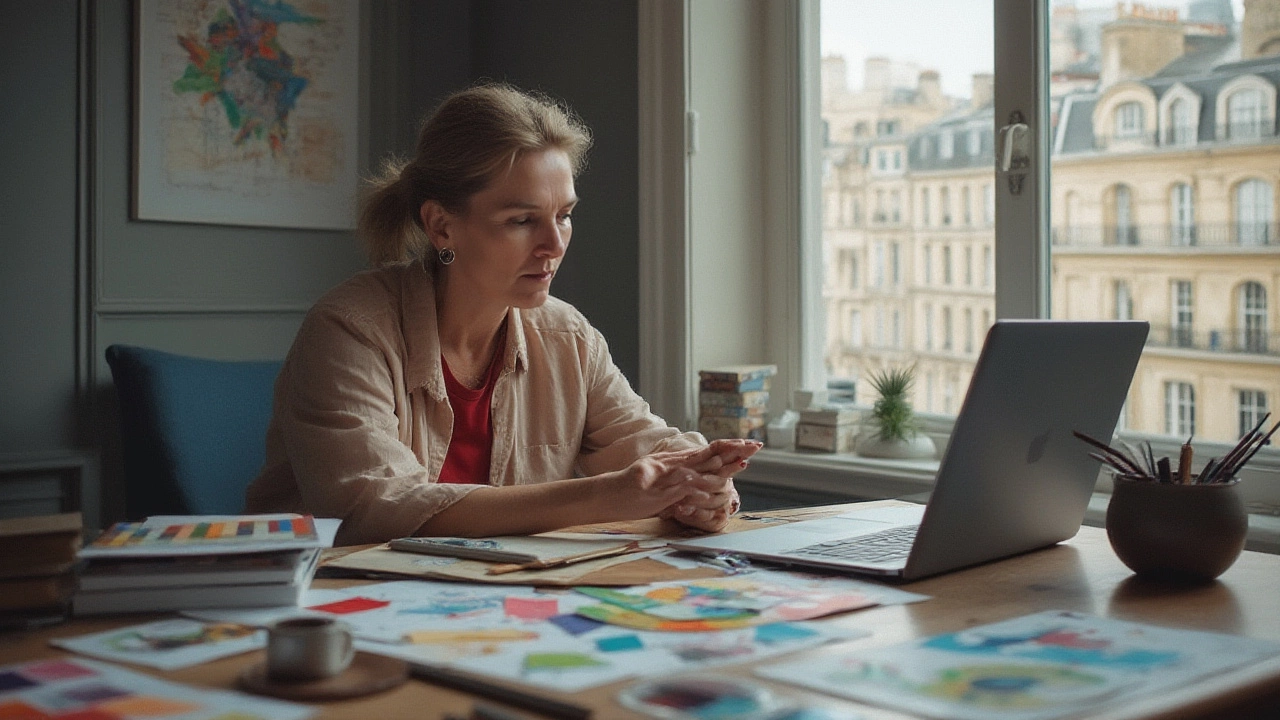Take a look at any room designed by a pro and you’ll spot the difference instantly. But before anyone’s moving couches, picking out lamps, or arguing over paint swatches, there’s the big question: how much cash do you actually need to become an interior designer in 2025? Spoiler—there’s more to it than buying a sketchbook and binge-watching HGTV. Sticker shock is real here, but so are the workarounds. Money always matters, but smart planning can make the leap a lot less scary.
The Real Price Tag: Education, Training, and Must-Have Tools
First things first: there’s no one-size-fits-all answer here. Some interior designers swear by four-year degrees. Others carve out their path with online courses, certifications, or apprenticeships. The heavyweight route—earning a bachelor’s in interior design from a legit university—sets most students back between $40,000 and $120,000 for the full run, depending on whether you hit up a public or private school. Want to keep those numbers friendly? Community colleges and trade schools drop the cost to about $10,000–$30,000. The difference? Big-name universities may attract top firms and design houses, but they’ll definitely make your wallet squeal.
If you already have a degree in another field or fancy a career change, certificate programs start from about $1,500 and can climb to $15,000 at respected institutions. Think of these as intensive crash courses—fast, focused, but still demanding. Online platforms like Coursera or Skillshare cost less (subscriptions are $20–$60 a month), but employers often want to see formal training and hands-on work. That’s where apprenticeships come in—frequently unpaid or low-paid gigs that give you critical, real-life experience. Count on setting aside a chunk of income for living expenses while you build up a standout portfolio for your resume.
Let’s talk gear. The starter pack looks something like this: a capable laptop ($800–$2,000), design software like AutoCAD or SketchUp (student licenses start at $60/year, but pro packages hit $300–$1,600/year), a solid measuring tape, color fans ($10–$200), and mood board supplies. Don’t forget travel expenses for site visits and fabric samples. Altogether, outfitting yourself for work runs most people $1,500–$5,000 the first year—not wild, but not pocket change, either.
Here’s an at-a-glance table breaking down the main costs:
| Expense | Low Estimate | High Estimate |
|---|---|---|
| University Degree (4 years) | $40,000 | $120,000 |
| Community College/Trade School | $10,000 | $30,000 |
| Certificate/Short Course | $1,500 | $15,000 |
| Software & Tools (Year 1) | $1,500 | $5,000 |
| Certification Exam (NCIDQ) | $1,310 | $1,410 |
| Living Expenses During Training | $12,000 | $40,000+ |
Skimping on education or ignoring tool costs is tempting, but the industry notices. Whether you’re freelancing or scoring a studio job, proof of training makes the difference, especially as remote work makes the hiring pool global. Instead of just tallying up the sticker price, ask yourself how you’ll cover living costs if you go full-time at school or internship. Most people juggle part-time work, and a few lucky souls turn passion projects (like redesigning their cousin’s kitchen for free) into portfolio gold.

Certifications, Licenses, and Those Sneaky Hidden Fees
Now, about those letters after your name. Depending on which state you’re in, becoming a credentialed interior designer isn’t optional. Most clients (and almost every employer) expect at least one certification—the gold standard here is the National Council for Interior Design Qualification (NCIDQ). It’s a three-part exam with a total price tag of about $1,310–$1,410 (as of mid-2025). But that’s not all—you’ll need to show proof of education and thousands of hours of supervised work, so this isn’t something you can just buy and slap on your resume after a weekend.
Beyond the NCIDQ, states like Florida and Nevada actually require a separate license to call yourself an “interior designer” for commercial spaces. For most cities, the process runs $50–$500 for application and initial licensing, plus around $100–$200 a year for renewal. Add to that the cost of keeping your skills sharp—industry conferences, continuing education units, or guest lectures can run anywhere from $250 to $2,000 a year, depending on how deep you dive into learning. Most pros budget for at least one big event annually.
Hidden fees? Oh yeah, they’re everywhere. Think printing giant project boards (can be $10–$50 per print), portfolio hosting on a personal website ($20–$200 per year), and professional association dues (like ASID or IIDA, $150–$500 yearly). Sending out resumes means paying for headshots ($100–$300), and some firms want background checks, which can be another $75 or so. Every step into the big leagues adds a few more receipts to the pile.
The cost doesn’t stop with paperwork and tests. Many cities require extra insurance if you hang out your own shingle—liability insurance, sometimes starting at $500 a year for a solo gig. Some jobs need you to rent workspaces or studios, though more designers are skipping this step in favor of working from home or meeting clients at project sites. If you do move into commercial design, plan for bigger up-front expenses: large-format printers, 3D rendering computers, or specialist lighting gear all add up fast.
Still, don’t get rattled—successful designers tend to hustle smart, joining co-ops, splitting project costs, and piggybacking expensive tools until their business grows. It’s a rite of passage to find creative solutions on a tight budget (think swapping services with a photographer or coder friend, or partnering with classmates for sample sales).

Investment vs. Payoff: Is Interior Design Worth the Cost?
So after dropping all this cash, what’s coming back in? According to the U.S. Bureau of Labor Statistics (2025 update), the median salary for interior designers in the U.S. clocks in at $63,200 a year. Not bad, but the top chunk (10%) is pulling in upwards of $104,000, especially if they stick with commercial gigs, luxury residential, or land their own clients. Brand-new designers usually start in the $40,000–$45,000 range, sometimes less if they’re freelancing or working in smaller cities, but freelancers who nail social media marketing and portfolio-building can jump pay brackets pretty quick.
The payoff is rarely instant. Even with a degree or certification, it takes most people three to five years to hit their stride, with steady work and reliable referrals. That’s why many chase side hustles—selling home accessories, staging houses for realtors, or running Instagram accounts on design trends can soften the hit from slow months. It’s not unusual to juggle two or three gigs at first. As you build your own brand and reputation, repeat clients and word-of-mouth will slowly replace feast-or-famine cycles.
If you want to cut costs, pay attention to where the big dollars are going. Textbooks? Always check used. Software? Milk every student discount you can, and use cloud-based apps until you can write off expenses as a business. Networking? Volunteer at industry events or trade shows—you’ll get education and contacts for free. And don’t forget, even small projects like a smart bathroom update or kid’s bedroom redesign make gold for your portfolio and client testimonials.
Plenty of folks try to save money by skipping formal training, jumping straight to DIY YouTube courses or home flipping. Occasionally, that works for creatives with a killer eye and networking game. But clients and employers in 2025 want proof, and insurance companies who back big projects want paperwork. Interior designer cost can sound intimidating, but every dollar is really buying you a shot at a flexible, creative career with solid earning potential and a clear growth path.
The secret? Expect to spend somewhere between $3,000 and $150,000, depending on your journey. Most new designers say their real investment averaged about $25,000–$40,000 over a few years. It’s high, but plenty of other white-collar careers—law, teaching, engineering—cost even more. If creativity’s in your blood and you’re determined to build something beautiful, the entry fee is just the start of a much bigger adventure.
